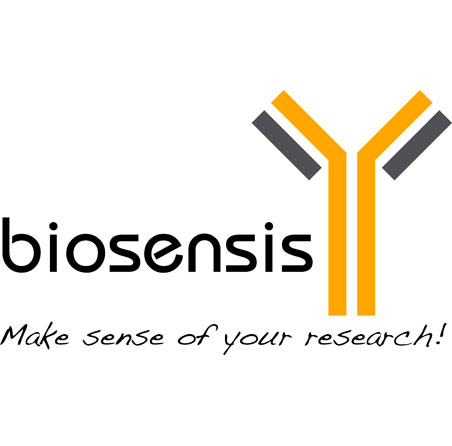Choline O-acetyltransferase (ChAT), Rabbit Polyclonal Antibody
As low as
US$317.00
Only %1 left
Catalog Number
R-1621
- Product Name Choline O-acetyltransferase (ChAT), Rabbit Polyclonal Antibody
- Product Description Rabbit anti-Choline O-acetyltransferase (ChAT) Polyclonal Antibody (Unconjugated), suitable for IHC-Frozen, ELISA.
- Alternative Names Choline O-acetyltransferase, CHOACTase, Choline acetylase
- Application(s) ELISA, IHC-Frozen
- Antibody Host Rabbit
- Antibody Type Polyclonal
- Specificity This antibody stains cholinergic neurons in human, rat, guinea-pig and rabbit central and peripheral nervous systems. This antiserum is known to react with ChAT of origin: human, rat, guinea-pig and rabbit.
- Species Reactivity Guinea Pig, Human, Pig, Rabbit, Rat
- Immunogen Description A synthetic peptide (GLFSSYRLPGHTQDTLVAQKSS) as a part of porcine ChAT protein (aa: 167-188) conjugated to KLH
- Conjugate Unconjugated
- Purity Description Affinity purified
- Regulatory Status For research use only.
Product Info
- Product Description Rabbit anti-Choline O-acetyltransferase (ChAT) Polyclonal Antibody (Unconjugated), suitable for IHC-Frozen, ELISA.
-
Related Products
Choline O-acetyltransferase (ChAT) control peptide (167-188), Purified Peptide
- Application(s) ELISA, IHC-Frozen
- Application Details IHC, 1 site ELISA. Use at a concentration of 1 µg/mL. This antiserum will superbly stain both cell bodies and nerve terminal. The optimal dilution should be determined by the end user.
- Target Choline O-acetyltransferase (ChAT)
- Specificity This antibody stains cholinergic neurons in human, rat, guinea-pig and rabbit central and peripheral nervous systems. This antiserum is known to react with ChAT of origin: human, rat, guinea-pig and rabbit.
- Target Host Species Pig
- Species Reactivity Guinea Pig, Human, Pig, Rabbit, Rat
- Antibody Host Rabbit
- Antibody Type Polyclonal
- Antibody Isotype IgG
- Conjugate Unconjugated
- Immunogen Description A synthetic peptide (GLFSSYRLPGHTQDTLVAQKSS) as a part of porcine ChAT protein (aa: 167-188) conjugated to KLH
- Purity Description Affinity purified
- Format Lyophilized
- Reconstitution Instructions Spin vial briefly before opening. Reconstitute in 100µL sterile-filtered, ultrapure water. Centrifuge to remove any insoluble material.
- Storage Instructions After reconstitution keep aliquots at -20°C for a higher stability, and at 2-8°C with an appropriate antibacterial agent. Glycerol (1:1) may be added for an additional stability. Avoid repetitive freeze/thaw cycles.
- Batch Number Please see item label.
- Expiration Date 12 months after date of receipt (unopened vial).
- Alternative Names Choline O-acetyltransferase, CHOACTase, Choline acetylase
- Uniprot Number P13222
- Uniprot Number/Name P13222 (CLAT_PIG)
- Scientific Background This gene encodes an enzyme which catalyzes the biosynthesis of the neurotransmitter acetylcholine. This gene product is a characteristic feature of cholinergic neurons, and changes in these neurons may explain some of the symptoms of Alzheimer's disease. Polymorphisms in this gene have been associated with Alzheimer's disease and mild cognitive impairment. Mutations in this gene are associated with congenital myasthenic syndrome associated with episodic apnea. Multiple transcript variants encoding different isoforms have been found for this gene, and some of these variants have been shown to encode more than one isoform. [provided by RefSeq, May 2010]
- Shipping Temperature 25°C (ambient)
- UNSPSC CODE 41116161
- Regulatory Status For research use only.
Specifications
- Specific References Leong WK, Klaric TS, Lin Y, Lewis MD, Koblar SA.(2013) Upregulation of the neuronal Per-Arnt-Sim domain protein 4 (Npas4) in the rat corticolimbic system following focal cerebral ischemia. Eur J Neurosci. 2013 Feb 22. doi: 10.1111/ejn.12163. [Epub ahead of print] Application: IH; species RatPubMed ID
- General References Benecke et al. (1993). J. Neurochemistry. 61: 804-811

 1800 605-5127
1800 605-5127 +61 (0)8 8352 7711
+61 (0)8 8352 7711
